Novel MR & MR-Compatible Technology
Oral
Engineering
Wednesday, 20 June 2018
| S06 |
16:15 - 18:15 |
Moderators: Michael Garwood, Clarissa Cooley |
16:15
 |
0943.
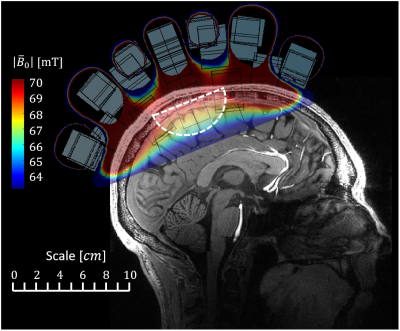 |
 A 6.3kg Single-Sided Magnet for 3D, Point-of-Care Brain Imaging A 6.3kg Single-Sided Magnet for 3D, Point-of-Care Brain Imaging
Patrick McDaniel, Clarissa Cooley, Jason Stockmann, Lawrence Wald
MRI, as currently used, requires transporting the patient to the scanner. A truly point-of-care MRI device, possibly even hand-held, could increase the utility of MRI extending its reach and enabling new applications, such as continuous bedside monitoring. In this work, we design and construct a light-weight (6.3kg), single-sided permanent magnet designed to image the cortical region it is positioned over (~8cm x 8cm x 3cm ROI). We describe the magnet optimization and compare the predicted and measured B0 field pattern and validate its imaging potential by acquiring 1D depth profiles in a phantom.
|
16:27
|
0944.
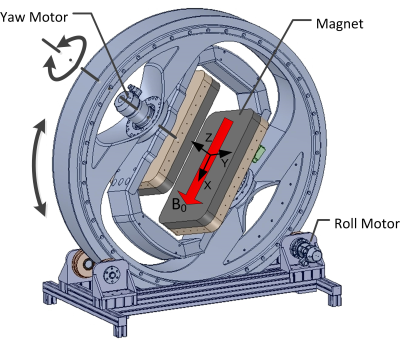 |
 Rotatable Main Field MRI Scanner for Angle Sensitive Imaging Rotatable Main Field MRI Scanner for Angle Sensitive Imaging
John McGinley, Mihailo Ristic, Ian Young
Anisotropies with respect to the main field direction in collagen-rich tissues may be exploited to provide new information about the tissue microstructures. However this requires the field to be oriented at various oblique angles relative to the subject. This is usually difficult and often impossible using conventional MRI magnet configurations. We have developed an entirely new open magnet concept which can be rotated about two motorised axes to achieve a wide range of orientations. The design of the magnet and the gradients posed special challenges. The new MRI system is suitable for imaging of extremities, particularly the knee.
|
16:39
|
0945.
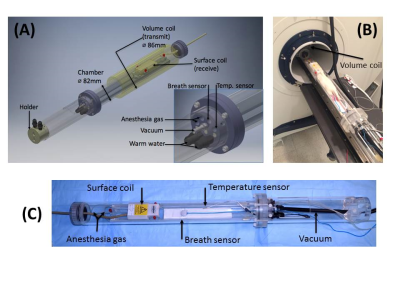 |
 MRI Compatible Hypobaric Chamber to study Early Aeromedical Evacuation Following Traumatic Brain Injury MRI Compatible Hypobaric Chamber to study Early Aeromedical Evacuation Following Traumatic Brain Injury
Su Xu, Sijia Guo, Steven Roys, Julie Proctor, Gary Fiskum, Rao Gullapalli
Combat-related TBI leads to significant mortality and morbidity. In our previous research, we have demonstrated that simulated aeromedical evacuation (AE), or hypobaria, worsens neurological outcomes after TBI and suggests that early AE of TBI patients contributes to secondary insults. To study the effects of such hypobaric exposure during early stage of injury we have constructed a MRI compatible hypobaric chamber that allows us to evaluate changes in metabolism, perfusion, and functional status in a preclinical model of brain injury. Here we demonstrate our initial experiences with the hypobaric chamber in the MRI to obtain in vivo imaging and spectroscopic data.
|
16:51
 |
0946.
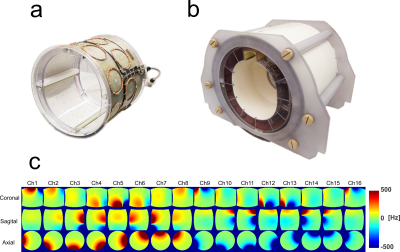 |
 Joint dynamic shimming using the scanner’s spherical harmonic shim combined with a local multi-coil shim array Joint dynamic shimming using the scanner’s spherical harmonic shim combined with a local multi-coil shim array
Ali Aghaeifar, Christian Mirkes, Klaus Scheffler
In this work, we combined scanner's spherical harmonic shim coils with a local multi-coil shim array to work in parallel for dynamic shimming of the human brain at 9.4 T. Performance of the combined method is compared with global shimming with scanner's built-in shim setup, global shimming with multi-coil and dynamic shimming with multi-coil.
|
17:03
|
0947.
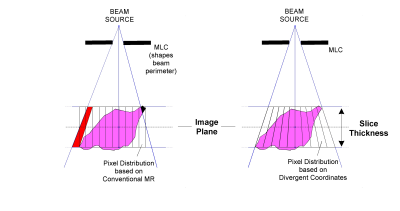 |
 Direct Generation of MR Images in a Divergent Coordinate System for MRI Radiotherapy Hybrids Direct Generation of MR Images in a Divergent Coordinate System for MRI Radiotherapy Hybrids
Keith Wachowicz, Brad Murray, B Gino Fallone
The direct generation of images in a divergent coordinate system may be important to some applications of MR imaging in MRI-radiotherapy hybrids. Specifically, in the circumstance where 2D images are being used for real-time therapy beam guidance, image generation in a divergent coordinate system that matches that of the treatment beam (which originates from a single source point) will reduce targeting errors and inadvertent dosing of critical structures. This work presents a theoretical hardware solution to a variety of MRI-radiotherapy implementations which involve the replacement or augmentation of conventional linear gradients. An experimental and simulated verification is presented.
|
17:15
|
0948.
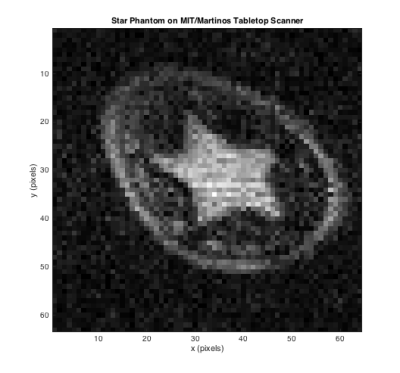 |
 A low-cost (<$500 USD) FPGA-based console capable of real-time control A low-cost (<$500 USD) FPGA-based console capable of real-time control
Suma Anand, Jason Stockmann, Lawrence Wald, Thomas Witzel
Conventional MRI consoles are high-cost and difficult to customize, typically using a proprietary language for creating pulse sequences. Recently, FPGAs have become the tool of choice in designing custom MRI consoles for their flexibility and speed. In this work, we describe a low-cost, open source, FPGA-based console using an off-the-shelf board that provides flexibility in pulse-sequence programming, robust timing, and excellent signal stability. Our goal is to facilitate the development of custom acquisition methods and provide a useful console for MR education and low-cost systems. We demonstrate its function by acquiring a 2D spin-echo image on an MIT/Martinos Tabletop scanner.
|
17:27
|
0949.
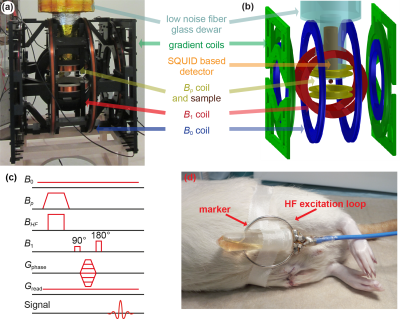 |
 Ex vivo continuous Overhauser nuclear dynamic polarization in a SQUID-based ultralow field magnetic resonance imaging system Ex vivo continuous Overhauser nuclear dynamic polarization in a SQUID-based ultralow field magnetic resonance imaging system
Paul Fehling, Rebekka Bernard, Rolf Pohmann, Matthias Rudolph, Dieter Kölle, Reinhold Kleiner, Klaus Scheffler, Kai Buckenmaier
Overhauser Dynamic Nuclear Polarization (ODNP) is a method to achieve continuous hyperpolarization in MR measurements. Here, the polarization of free radicals is transferred to 1H using High Frequency (HF) pulses at the electron Larmor frequency. At UltraLow Fields (ULF) the frequency of the HF pulse lies in the range of several 100 MHz and is able to penetrate large sample volumes, making continuous in vivo ODNP measurements possible. Since conventional Faraday coils are not sensitive enough at ULF, a Superconducting QUantum Interference Device (SQUID) based detector is employed. First ex vivo images using ODNP enhanced MR have been acquired successfully.
|
17:39
|
0950.
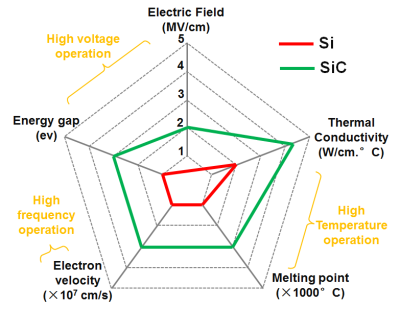 |
 Advanced Gradient Driver Design with Silicon Carbide MOSFETs Advanced Gradient Driver Design with Silicon Carbide MOSFETs
Ruxi Wang, Juan Sabate, Viswanathan Kanakasabai, Yash Singh, Jayanti Ganesh, Huan Hu
In a MRI system, gradient driver is a switching power supply which is composed of power semiconductor devices, such as insulated gate bipolar transistors (IGBTs), power metal oxide semiconductor field effect transistor (MOSFET), etc. To control an electrical power that can be transferred by the gradient driver, the power semiconductor devices are usually operated in a pulse width modulation (PWM) method with high voltage, high current and high switching frequency [1-4]. With advanced semiconductor devices like silicon carbide devices, each module could sustain higher voltage which will simplify the power supply architecture. Meanwhile, the fast switching capability of Silicon Carbide (SiC) devices make the gradient amplifier more efficient than silicon version. This paper presented a high performance modular solution gradient amplifier system with advanced wide-band gap SiC devices. Image test with the advanced gradient driver was demonstrated in this paper.
|
17:51
|
0951.
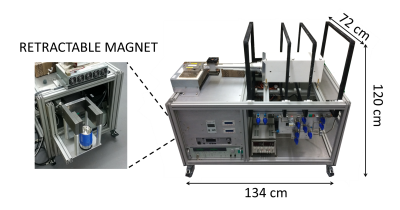 |
 High-performance portable spin-exchange optical pumping polarizer for hyperpolarized 129Xe MRI High-performance portable spin-exchange optical pumping polarizer for hyperpolarized 129Xe MRI
Graham Norquay, Guilhem Collier, Oliver Rodgers, Jim Wild
There is increasing interest in hyperpolarized (HP) 129Xe MRI for research and clinical imaging questions in the lungs and other organs where dissolved xenon can be used to assess tissue perfusion. With the motivation of increasing the availability of HP 129Xe technology we undertook to design and build a portable 129Xe polarizer. We demonstrate here a compact portable 129Xe polarizer capable of generating 129Xe polarized to ~35% at a production rate of 1.8 L/h. The polarizer is entirely self-contained, requiring only mains electricity at the site of interest.
|
18:03
|
0952.
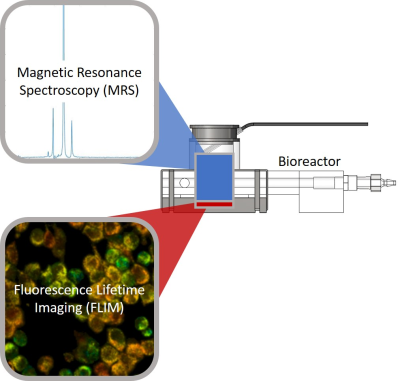 |
 Multiscale measurement of the effects of glucose starvation on 4T1 murine breast cancer cells using an MRI and optical microscopy compatible bioreactor Multiscale measurement of the effects of glucose starvation on 4T1 murine breast cancer cells using an MRI and optical microscopy compatible bioreactor
Benjamin Cox, Sarah Erickson-Bhatt, Joseph Szulczewski, Kai Ludwig, Erin Adamson, Robert Swader, Suzanne Ponik, Kevin Eliceiri, Sean Fain
The design and application of a novel bioreactor capable of facilitating both magnetic resonance spectroscopy (MRS) and optical fluorescence microscopy for complementary metabolic information is described. Fluorescence lifetime imaging (FLIM) of nicotinamide adenine dinucleotide (NADH) and hyperpolarized [1-13C] pyruvic acid (PA) MRS were performed on 3D cell cultures of 4T1 murine breast cancer cells to study the effects of glucose starvation across cellular and population scales. The system provides a novel test-bed for simulating cell-matrix and cell-cell interactions in a 3D microenvironment for investigating multi-scale cellular metabolism in vitro.
|
|












